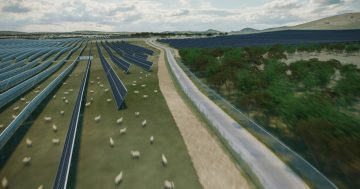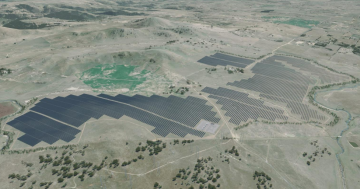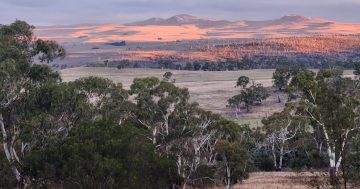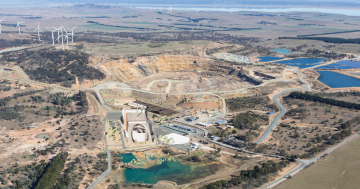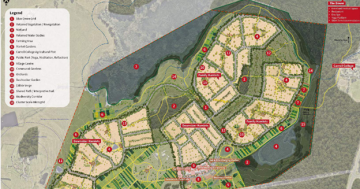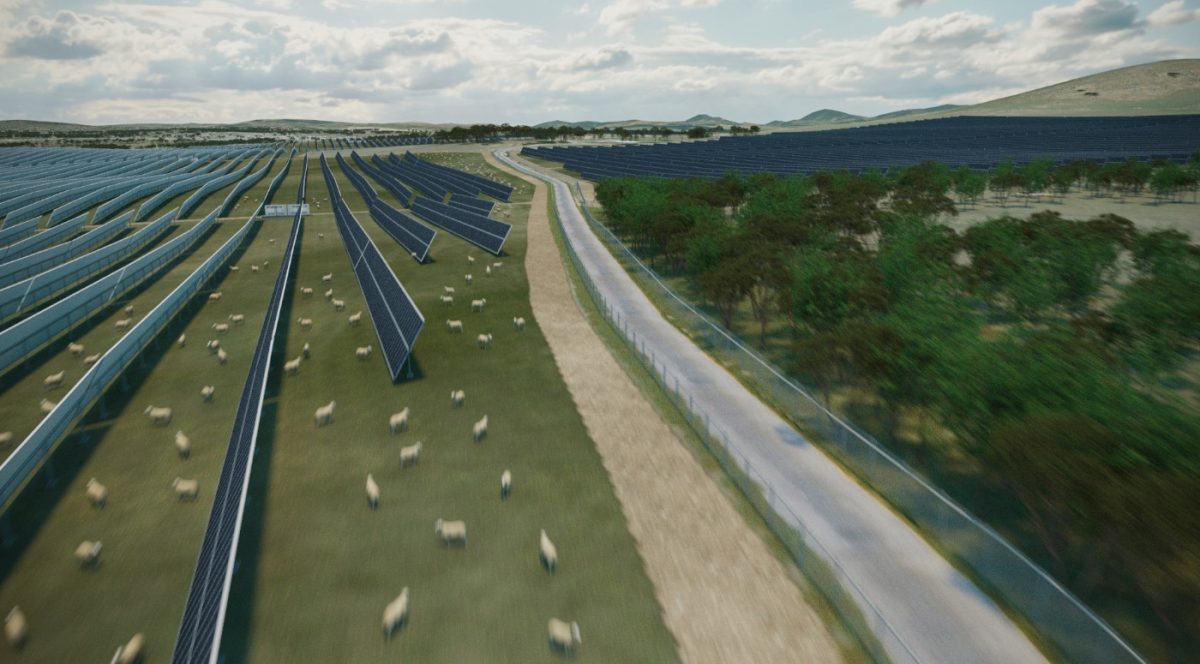
Wallaroo Solar Farm will power 48,000 homes. It is expected that grazing will still be possible in and around the facility. Image: Wallaroo Solar farm.
Landholders will continue the fight against the $166 million Wallaroo Solar Farm in the NSW Land and Environment Court after its approval this week.
The NSW Independent Planning Commission gave the green light for the 100-megawatt project to be built on grazing land just across the northern ACT-NSW border but imposed a range of conditions, including screening the site from nearby residents and landholders.
However, winemaker Nick O’Leary, whose property and cellar door are nearby, said opponents were bitterly disappointed and had already started to prepare to challenge the decision.
Mr O’Leary said he had no confidence in the Commission, and people were angry that their views had been disregarded despite the list of conditions.
He said opponents were also concerned that a disqualified person could be approved to deliver a $170 million project without multiple departments taking time to do a simple reference check.
This was in relation to Daniel Adin Flynn, a former director of Wallaroo Solar Farm, who was disqualified by ASIC from managing corporations for three and a half years in 2020 over five failed companies that operated in the solar industry.
WSF told The Australian that Mr Flynn could still act as a director while awaiting the outcome of his appeal and signed the company’s EPBC submission in 2021. He resigned after the appeal failed.
“It seems a lot is being swept under the carpet to push through rushed policies,” Mr O’Leary said.
“As far as I’m concerned, this is just the beginning.”
He said it wasn’t just about the views but the impact a large project like this would have on lives and livelihoods.
Nearby residents, including some from the ACT, and landholders opposed the project saying it would be an eyesore, impact the rural character of the area and the environment, and businesses such as local wineries, as well as pose noise, dust and pollution risks.
However, the NSW Independent Planning Commission found the project was in the public interest, and the site was suitable for renewable energy development given its location close to existing electricity transmission networks, topography, avoidance of major environmental constraints, access to the regional road network and potential for continued use of the land for grazing.
The Commission said the 5 km buffer rule raised by objectors did not apply to the proposal because Canberra suburbs, such as Dunlop, were not recognised as a regional city.
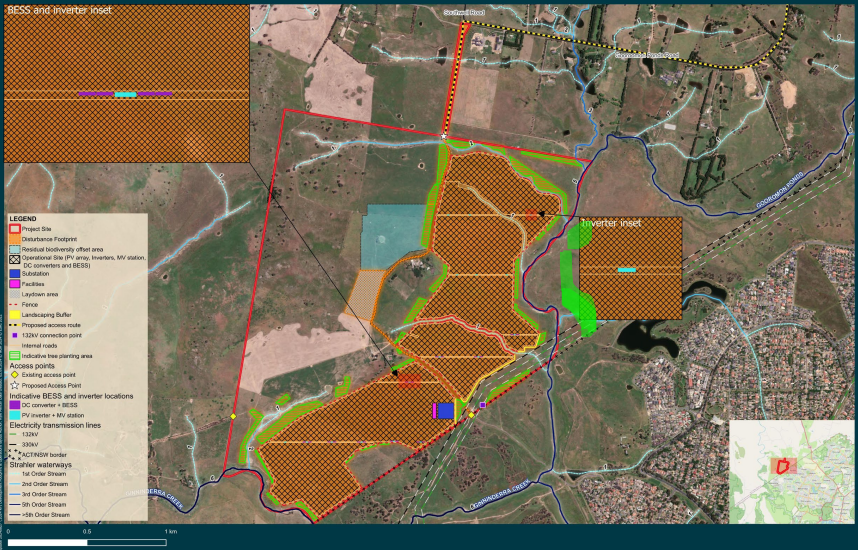
The Wallaroo Solar Farm’s footprint will be less than half the 393-ha site. Image: NDH.
The Commission imposed conditions to prevent, minimise, mitigate and/or offset adverse impacts and ensure ongoing monitoring and management of residual impacts.
The proponent will need to establish and maintain a vegetation buffer to screen the solar farm from view, denser for Dunlop residents, infrastructure will need to blend in with the surroundings, and solar tracking of panels will be limited to prevent glare.
It will also need to limit traffic on access roads and repair those damaged in the construction phase.
The Commission found the chances of contamination from damaged solar panels were minimal and set conditions for the safe management of dangerous goods such as chemicals. The proponent will have to prepare soil and water management plans and an environmental strategy.
When the solar farm reaches the end of its life, the proponent will need to rehabilitate the land after decommissioning.
The Commission found that bushfires and other fire risks could be suitably controlled through standard fire management procedures.
New Energy Development and Univergy International say the 100-megawatt project will produce enough clean renewable energy to supply about 48,000 homes in NSW and the ACT.
It includes 182,000 mounted solar panels, a battery storage facility and an on-site substation connecting to the existing transmission line. The solar farm will occupy less than half of the 393-ha site.
WSF spokesperson Ben Cranston told Region that construction was expected to commence in early 2025, and the solar farm would start operating in 2026.
He said further changes to the operational footprint of the project were unlikely. However, the company is committed to making viable changes to further reduce potential impacts in line with the conditions of consent set out by the IPC.
“We are committed to continuing to engage with the community to help find ways to further reduce potential impacts where possible,” he said.
Chief Minister Andrew Barr said an extensive list of conditions had been placed on the project after community consultation and the engagement from key stakeholders such as the Environment Protection Agency.
Mr Barr said that while more renewable energy projects were needed, they had to retain their social licence.
He said stricter planning and zoning requirements in the Territory meant proposals not aligned with the zoning were not going to fly.
“Whether it’s a solar farm or a stadium, trying to jam something in, in a location that’s not suitable, isn’t the best way to proceed.”













